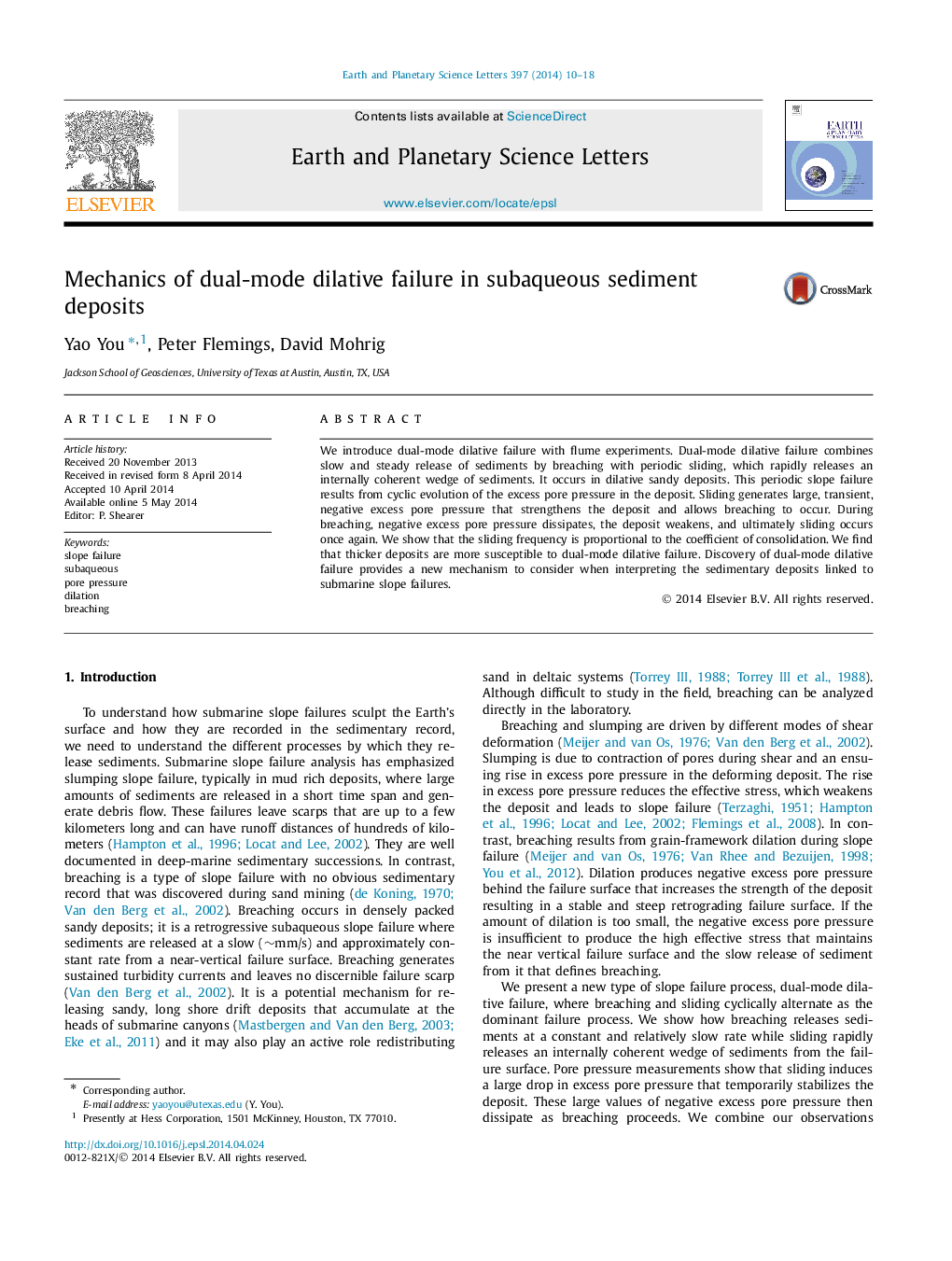| Article ID | Journal | Published Year | Pages | File Type |
|---|---|---|---|---|
| 6429361 | Earth and Planetary Science Letters | 2014 | 9 Pages |
â¢We use flume experiment to show a new type of slope failure in sandy deposit.â¢Slope failure cyclically alternates between two modes: breaching and sliding.â¢Breaching: sediments released grain by grain over a near 90° slope that retreats at a constant speed of mm/s.â¢Sliding: a triangular sediment wedge slides along an 80° slope.â¢Coefficient of consolidation controls the frequency of sliding.
We introduce dual-mode dilative failure with flume experiments. Dual-mode dilative failure combines slow and steady release of sediments by breaching with periodic sliding, which rapidly releases an internally coherent wedge of sediments. It occurs in dilative sandy deposits. This periodic slope failure results from cyclic evolution of the excess pore pressure in the deposit. Sliding generates large, transient, negative excess pore pressure that strengthens the deposit and allows breaching to occur. During breaching, negative excess pore pressure dissipates, the deposit weakens, and ultimately sliding occurs once again. We show that the sliding frequency is proportional to the coefficient of consolidation. We find that thicker deposits are more susceptible to dual-mode dilative failure. Discovery of dual-mode dilative failure provides a new mechanism to consider when interpreting the sedimentary deposits linked to submarine slope failures.
